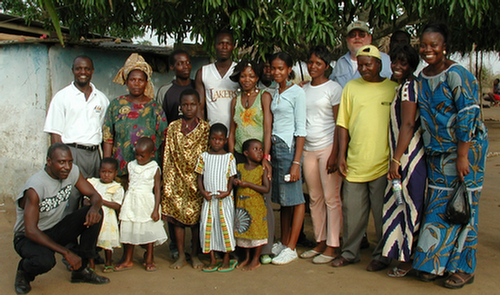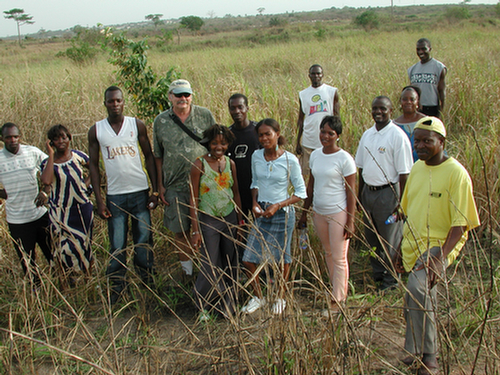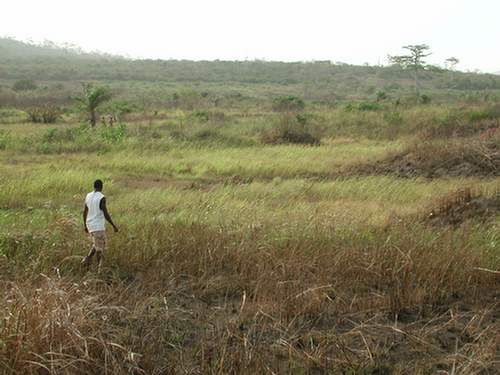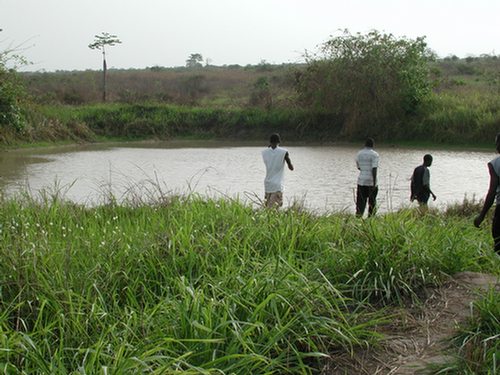
Ghana – Chapter 20
Accra, February 20, 2006
"News from Buduburam"
I have an update on developments at Buduburam and with the Kiafa Youth Center (KYC).
First of all, kudos go to an anonymous donor (who shall remain not only anonymous, but also unnamed), who sent a $500 check to help out the youth center! That check has gone into the bank to help out on future projects.
Other donors have this month helped KYC finally get the used photocopier that they wanted (final cost - with some toner and taxi fare) was 2.2 million cedis - that's about $240 for you non-Ghanaians. Help also went to Christiana Elliott, one of the KYC youth, to enroll in an auto mechanics training program (520,000 cedis - $57).
Kudos also go to Lorene Vaut (aka my mother). She has sparked the interest of her church in Lindsay in KYC and the tribulations of the refugees at Buduburam. Her pastor has started fundraising among the congregation to help fund KYC's agricultural project. Mom also gets a blue ribbon for contacting her Friendship Force gang. That's the group of people (mostly from Alabama) that she traveled to Ghana with last summer. David Lambert, the leader of that group and a former Peace Corps Volunteer in Ghana, has also volunteered to try to raise some funds for the KYC agricultural project.
Kiafa Youth Center Agricultural Project
A quick summary for those of you with an interest: KYC has about 150 youth members (mostly in their early 20's). They want to rent around 10 acres near the camp to grow vegetables on. This will be partly for agricultural training, partly for food supply for the camp, and partly to raise money for KYC selling extra vegetables.
If you're really interested in this, you can read more at KYC Ag Project. This proposal was drafted by Kanton Wright and Morris Sirleaf, two of the leaders of Kiafa. It explains a little history of the camp and the project and has a detailed budget.
Sunday, Mike Filipiak and I drove out to visit the camp and to talk to them about the plans for the agricultural project. (Mike works with me at USAID). They took us for a hike over the land that they have agreed to rent from a farmer in a nearby village. It's about a mile from the camp (a little shorter if you take the short cut walking through the bush).
The farmer who owns the land is the woman in the back row, on the left, with the cloth wrapped around her head. the two boys to her left (#3 and #4 from the left in the back row) are her sons and the five children in the front row are hers, as well.

I'm the light guy in the cap in the back row. All of the other people in the picture are members or directors of the Kiafa Youth Center. Kanton Wright is squatting on the left in the gray t-shirt. Morris is the fellow in the yellow t-shirt with the yellow cap. Christiana - the auto mechanic to be - is in the white t shirt and pink pants in the front row.
We walked the boundaries of the land they have agreed to rent. It's really about 15 acres, but there are some sand pits that were dug in the middle of it, so probably 10-12 acres are actually farmable. This gives you and idea of the terrain. It is currently covered in elephant grass and brush, except for a small part that is already farmed and a small pond. (That's Mike, the Minnesota looking guy in the cap).

The land lies in a shallow valley. The palm tree in the distance on the left is the far edge of the plot (about 100 yards away). The top soil looks OK. They're going to rent a tractor to come and plow the whole thing under for them before they start dividing it up into garden plots. The elephant grass is like johnson grass in the US. It's tough and well rooted and really hard to dig up.

Here is the pond. It is the end of the dry season now and the pond still has plenty of water in it, but no one is using the water right now. It is rain fed from run off on the land and doesn't hold a lot of water. Kanton has an idea to build a simple drip irrigation system. You run a couple of hoses with pin holes in them from a 55 gallon metal drum set up above the garden and keep the drum full of water. The holes in the hoses are positioned at the base of the garden plants. It's much more efficient that trying to water with watering cans or sprinklers (lots of evaporation). The problem will be finding suitable hoses.

They are hoping to put a down payment on the land this week so that the farmer won't be tempted to lease it to someone else. I found enough money to help them do that. Then as soon as they have the rest of the funds, they'll get it plowed and start putting in the nursery beds for the tomatoes, peppers, onions and eggplants. The rains should come in a few weeks and they would like to start direct seeding as soon as that happens.
I'll keep you posted on developments.
Click here to go back to the Table of Contents